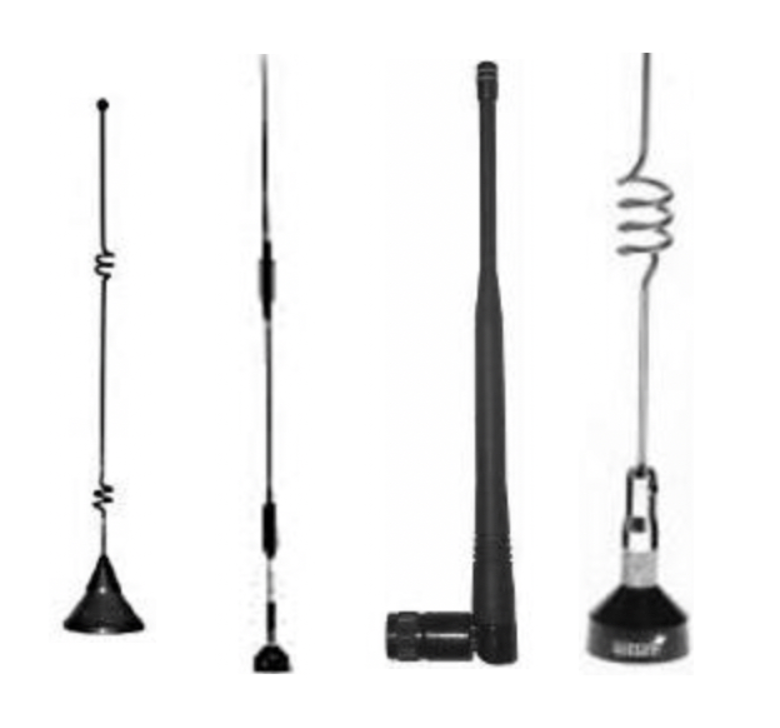Portable Whip Antennas

Portable whip antennas are flexible solutions intended for mobile and outdoor use, giving dependable signal coverage over a range of frequencies, from the very high frequency (VHF) band to the ultra high frequency (UHF) band. Compact and lightweight, they're good for communication over short distances. As such, they're ideal in situations where you need to communicate but can't be tethered to a stationary radio.
Numerous portable whip antennas come equipped with a SMA male connector, which renders them compatible with a wide range of communication devices. These mobile whip antennas can thus be used with hand radios, mobile communication kits, and various other forms of portable, non-stationary transmission equipment. They perform well, in these contexts, due in no small part to a possible inclusion, in their design, of an adjustable gain function that allows the user to set the level of gain appropriate to the immediate surroundings. Thus, when used with portable, non-stationary communication devices, these antennas reliably extend the signal range and enhance the clarity of the communication itself.
More Information about Whip Antennas
A mobile whip antenna can serve various uses. It can be found in mobile applications, such as those installed in the emergency response and fieldwork vehicles and recreational off-road vehicles. They are essential accessories for motorhomes and five-wheeled campers, making portable ham radio in the image of an antenna possible no matter where you are in the United States, and even up into Canada. Their pivotal role in the mobile emergency operations command center underscores how far antenna technology has come in a relatively short time.
FAQs
Do telescoping antennas have the same features as fiberglass antennas when used on a vehicle?
Telescoping antennas and fiberglass antennas generally differ in features when used on a vehicle, as telescoping antennas offer adjustable length for flexible signal reach, while fiberglass antennas are fixed, durable, and often more resistant to environmental conditions.
Are mobile whip antennas that come in a kit perfect for remote locations?
Mobile whip antennas that come in a kit are ideal for remote locations, providing portability and reliable signal access where traditional connectivity may be limited.
Antennas: Omni vs Yagi
Omni Antennas can pick-up signals coming from all directions. They are most commonly used for signal reception over a large area where the potential location of any incoming signal's transmitter varies. Therefore, unlike Yagi antennas, Omni antennas do not need to be pointed in a particular direction. Each specific antenna has a gain rating or dBi (decibel isotropic) number which coincides with the performance of the antenna. The higher the dBi rating, the larger area covered.
Advantages and Disadvantages
• Easy setup and install
• Can send and receive signals from multiple locations with just one antenna
• Limited on the distance it can communicate
• Not a great option from areas with poor signal strength

